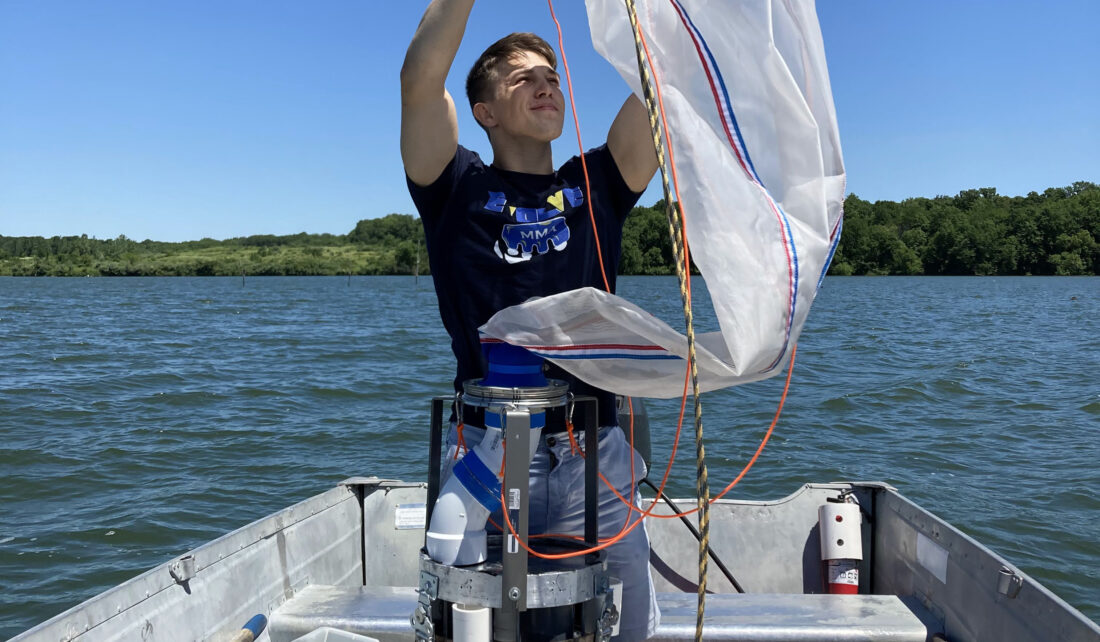
When it comes to managing ecosystems to address the problem of aquatic invasive species, knowing where they are and in what numbers can be critical in helping prevent the spread. To that end, an Illinois-Indiana Sea Grant faculty scholar is automating sampling equipment for keeping track of the invasive spiny water flea to make the process easier and more efficient.
Spiny water fleas are native to European and Asian waters but were introduced to the Great Lakes in the 1980s, likely in ballast water. These microscopic zooplankton eat other zooplankton, which are the base of the Great Lakes food web, but spiny water fleas have spikes on their long tails, so they are not a desirable food item. Their populations have grown and, today, they can be found throughout the Great Lakes.
“Traditionally, the way we sample aquatic microorganisms, including the water flea, is to throw a net out into the water and pull it up slowly. This is cumbersome and you are only able to do one sample at a time,” said Sachit Butail, a professor of mechanical engineering at Northern Illinois University.
With input from scientists at NOAA, he has worked to improve the design of an automated device for sampling aquatic microorganisms to expand its capacity and accuracy. This motorized device that is lowered into the water has six chambers − water passes through a net into one of the chambers. Each time the device is brought up out of water, it revolves, securing a water sample for analysis.
This allows for the collection of multiple samples in different locations in one field day.
In laboratory testing, using chia seeds, the revised design significantly improved the device’s performance—it reduced contamination between the chambers, resulting in a more accurate analysis of each site sampled.
Butail, who does much of his research and development in robotics, sees this project as a step toward creating a fully robotic sampling device as well as an autonomous boat that can be controlled from the shore. His team has developed preliminary designs for the boat and they are trying out early versions of the robotic sampling device in a laboratory testing pool.
“The new robot, which is in the shape of a glider and has an attached net, is an early step toward developing new ways to offset the effort that is traditionally required to sample water flea in deep waters,” said Butail.
Looking to the future, he sees the potential of widespread use of this technology in addressing aquatic invasive species.
“I hope that one day robotic technology will become integrated with citizen science,” said Butail. “My hope is that at some point, we can have citizen scientists directly control robots that record underwater videos. I think that the scale at which that would give us data about invasive species would be really significant.”
Illinois-Indiana Sea Grant is a partnership between NOAA, University of Illinois Extension, and Purdue University Forestry and Natural Resources, bringing science together with communities for solutions that work. Sea Grant is a network of 34 science, education and outreach programs located in every coastal and Great Lakes state, Lake Champlain, Puerto Rico and Guam.

